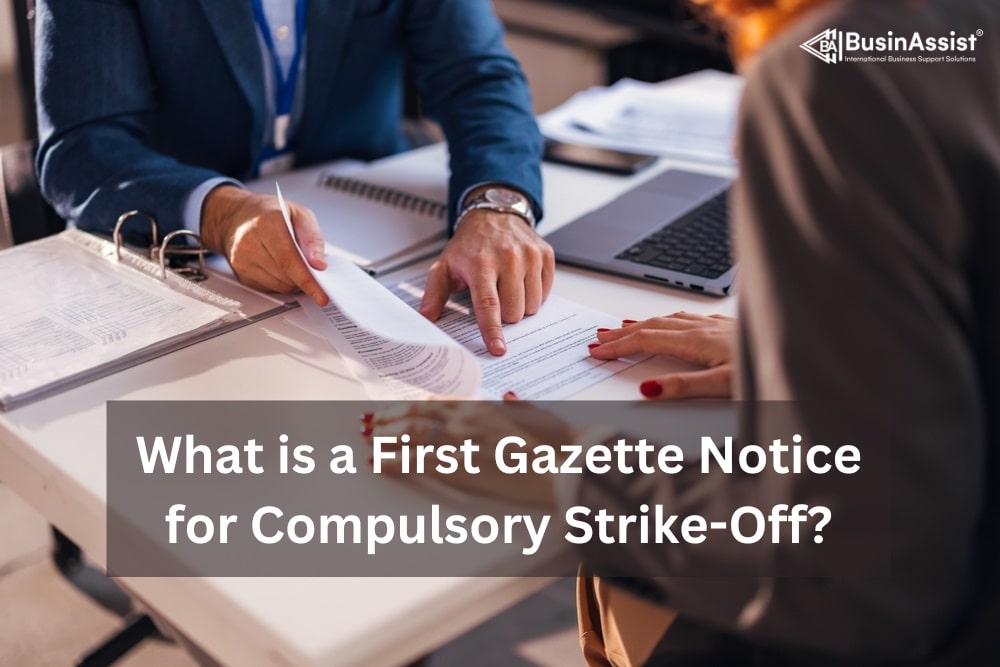Comprehending Compulsory Strike Off: What You Required to Know
Comprehending Compulsory Strike Off: What You Required to Know
Blog Article
A Comprehensive Overview to the Compulsory Strike Off Procedure in Corporate Governance
The compulsory strike off procedure, a crucial component in corporate governance, serves as a system to apply conformity and preserve the stability of the service setting. As companies develop and circumstances change, the need to strike off a firm might arise for numerous factors.

Reasons for Compulsory Strike Off
There are numerous vital reasons that might motivate the initiation of an obligatory strike off procedure for a business. Non-compliance with governing requirements can increase problems concerning the company's operations and economic wellness, leading to the decision to strike off the firm from the register.
In addition, firms that have actually stopped trading or are no more performing any service activities might likewise deal with compulsory strike off. This can be because of bankruptcy, mergers, or merely a decision to wind up the company. In such situations, preserving the business on the register would certainly serve no function and could potentially create complication among stakeholders.
Eventually, the necessity of an obligatory strike off in corporate administration emerges when a firm is no much longer running based on the regulation or has come to be defunct, requiring its removal from the authorities records.
Legal Implications and Threats
Offered the situations that trigger a compulsory strike off in business governance, it is vital to recognize the lawful implications and threats connected with such activities. When a company is struck off the official register, it stops to exist as a legal entity. This can have major repercussions for financial institutions, shareholders, and supervisors. Supervisors may deal with personal liability for firm financial obligations incurred after the dissolution, subjecting their possessions to possible seizure. Investors lose their financial investment in the company, and lenders might find it testing to recuperate financial obligations owed to them.
Moreover, there are legal consequences for people associated with the management of a company that has been by force struck off. They may be invalidated from working as supervisors in the future, face fines, or perhaps imprisonment if misbehavior or deceitful activities are revealed. In addition, the reputational damages from a mandatory strike off can have long-term effects on individuals and their capacity to participate in future organization ventures. Comprehending these legal effects and dangers is vital for all stakeholders involved in the company governance process to guarantee and navigate potential challenges compliance with the law.
Steps in the Strike Off Process
Launching the mandatory strike off procedure in company governance involves a series of proposed actions laid out by regulatory authorities. The initial step usually needs the company to send an official application or alert to the appropriate federal government firm or registrar signaling its intent to be struck off the main register. Ultimately, the business is frequently needed to settle any type of outstanding responsibilities, financial debts, or taxes to guarantee compliance with regulative needs.
As soon as the preliminary documentation is submitted and financial responsibilities are satisfied, the regulative body will certainly release a notice in the official gazette or a similar magazine to notify stakeholders about the approaching strike off - what is compulsory strike off. This notification acts as a last opportunity for any kind of interested celebrations to raise arguments or present legitimate reasons the business need to not be liquified
Adhering to the magazine of the notice, the regulatory authority will certainly wage the strike off process if no considerable arguments or challenges occur. The company will certainly then be officially dissolved, and its name will certainly be removed from the register, effectively noting the verdict of the compulsory strike off treatment in corporate governance.
Documents Needed for Strike Off
In compliance click to investigate with regulatory standards, specific documents has to be given to assist in the strike off process in business governance. The needed papers usually consist of a formal application for strike off, which needs to be completed properly and submitted to the pertinent regulatory authority. Additionally, financial statements, such as the firm's most recent balance sheet, need to be included to guarantee that all monetary responsibilities have been resolved before starting the strike off treatment. A declaration of solvency or a declaration confirming that the firm has no impressive obligations is often mandated to demonstrate that the entity can be dissolved without triggering harm to its financial institutions. Additionally, any type of necessary authorizations from investors or board participants should be documented and confined with the application. It is vital to ensure that all the requisite documents is thoroughly prepared and sent according to the suggested guidelines to quicken the strike off process effectively. Failing to offer the essential paperwork may result in hold-ups or complications in the dissolution of the firm.
Post-Strike Off Obligations and Factors To Consider
Complying with the conclusion of the needed paperwork for strike off, focus changes to the post-strike off obligations and considerations that are vital in the corporate governance process. As soon as a business has actually been struck off the register, it is important to make certain that all staying assets are managed appropriately. This consists of distributing any kind of continuing to be funds amongst investors and resolving any outstanding financial obligations or obligations. In addition, business supervisors have to make sure that all tax obligation obligations are fulfilled, last employee repayments are made, and that all necessary filings are completed with pertinent regulatory bodies.

Verdict
In verdict, the obligatory strike off procedure in company governance functions as a required mechanism to remove obsolete business from the register. Understanding the reasons, lawful ramifications, actions, and records required for strike off is critical for conformity with regulatory needs. It is essential for firms to fulfill their post-strike off commitments and consider the implications of this process in order to keep great standing and prevent possible Visit Your URL dangers.
There are a number of crucial reasons that may trigger the initiation of a required strike off treatment for a business (what is compulsory strike off). Non-compliance with governing demands can elevate problems regarding the business's operations and financial health and wellness, leading to the choice to strike off the business from the register

Report this page